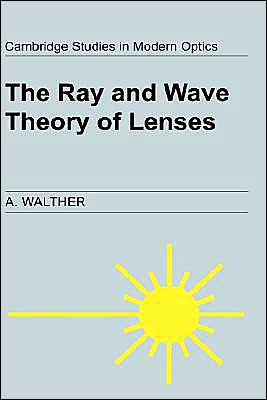The Ray and Wave Theory of Lenses
This book describes techniques used to predict the quality of images formed by optical systems, such as telescopes, camera lenses, and microscope objectives. It covers in detail how the ray and wave pictures of lens behavior can be combined and developed to produce a theory capable of dealing with the large angles encountered in real optical systems. Several applications are considered, including the propagation of a Gaussian beam along a skew ray, a clear and convincing demonstration that diffractive optical elements are subject to the same fundamental limitation as conventional lenses, a thorough discussion of the "cosine-to-the-fourth law," and a detailed example of mock ray tracing. Containing many practical insights, as well as exercises and solutions, this book will be of great interest to graduate students taking courses in this field, and to anyone working in optical design and engineering.
1100943196
The Ray and Wave Theory of Lenses
This book describes techniques used to predict the quality of images formed by optical systems, such as telescopes, camera lenses, and microscope objectives. It covers in detail how the ray and wave pictures of lens behavior can be combined and developed to produce a theory capable of dealing with the large angles encountered in real optical systems. Several applications are considered, including the propagation of a Gaussian beam along a skew ray, a clear and convincing demonstration that diffractive optical elements are subject to the same fundamental limitation as conventional lenses, a thorough discussion of the "cosine-to-the-fourth law," and a detailed example of mock ray tracing. Containing many practical insights, as well as exercises and solutions, this book will be of great interest to graduate students taking courses in this field, and to anyone working in optical design and engineering.
196.0
In Stock
5
1

The Ray and Wave Theory of Lenses
416
The Ray and Wave Theory of Lenses
416
196.0
In Stock

Product Details
| ISBN-13: | 9780521451444 |
|---|---|
| Publisher: | Cambridge University Press |
| Publication date: | 02/02/1995 |
| Series: | Cambridge Studies in Modern Optics , #15 |
| Pages: | 416 |
| Product dimensions: | 5.98(w) x 9.02(h) x 1.06(d) |
From the B&N Reads Blog
